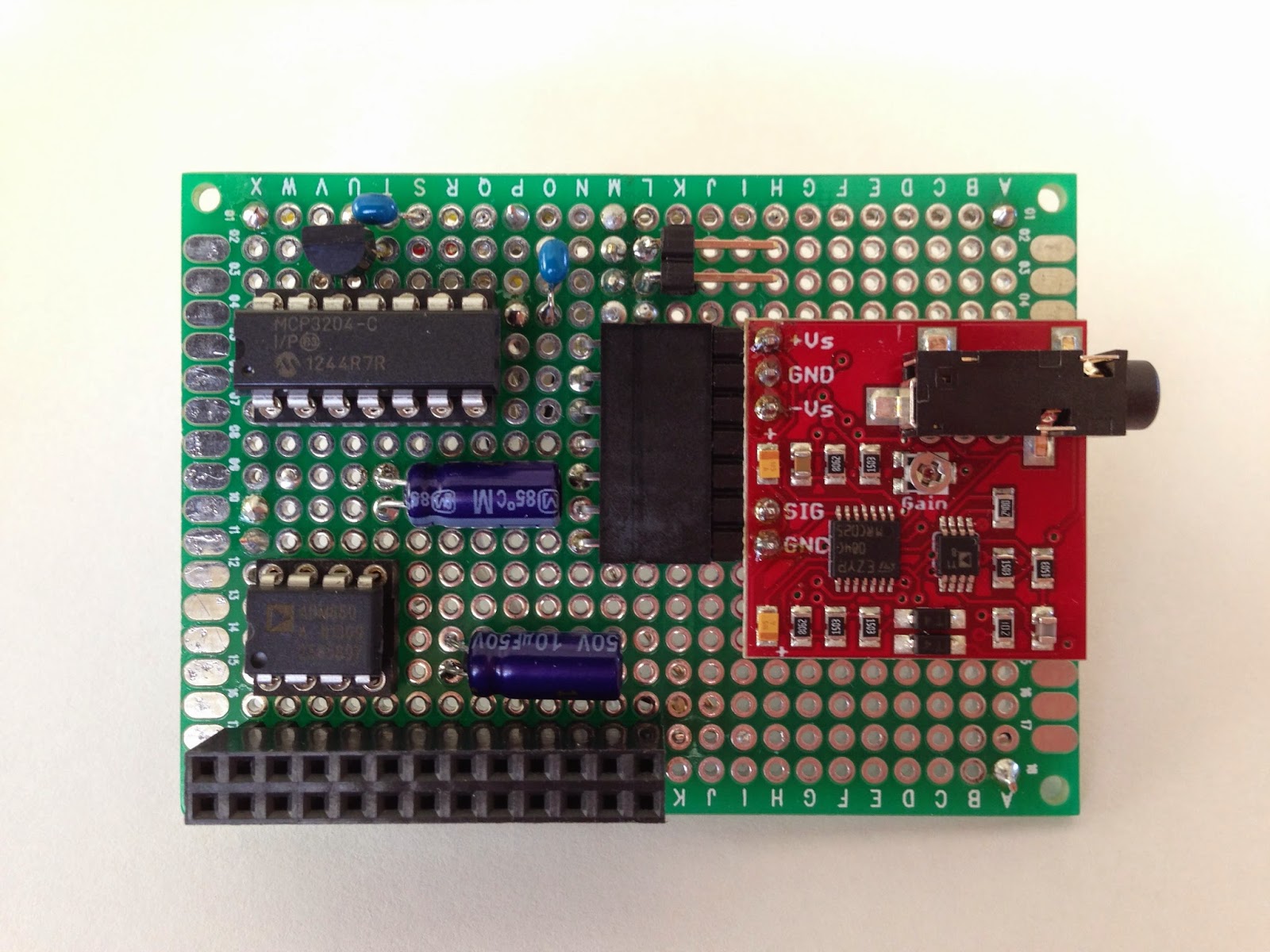In case you're joining this blog late, I've been working on a bruxism alarm and monitor called 'chompr'. My original plan was to build something based on an Arduino. I still may go that route, but recently I've been contemplating other options.
The Arduino is a minimal processor with limited capabilities. My original design called for a microSD card, LCD display, adjustable audio output and additional SRAM. After adding all of this stuff to the Arduino, I found myself wondering if there was a better option.
My latest experiment involves a Raspberry Pi... specifically, the Model A. I chose the Model A because it has one USB port and no Ethernet, which significantly lowers its power consumption as compared to the more popular Model B. I built a "shield" board that attaches to Pi via a 26-pin header. The header provides access to the SPI bus, I2C, GPIO and system power. Since the Pi doesn't include an analog-to-digital converter, I added a 12-bit ADC chip (MCP3204) to the shield. The whole circuit runs off of the Pi's 5V supply, which I run through an ADM660 chip to get the negative supply voltage. See
this earlier post for some more detail on the power supply. I attached the Muscle Sensor v3 to the shield through a right-angle header, so I could easily remove it for other experiments. Here's are some photos of the project...
 |
| Raspberry Pi EMG shield |
 |
| Raspberry Pi Model A, mounted in a food storage container |
 |
| Another angle, showing the Edimax WiFi dongle attached |
 |
| Raspberry Pi with EMG shield board attached |
 |
| The whole thing with the lid on |
 |
| What project photo would be complete without a U.S. quarter? |
Here are the pros and cons of the design so far:
Pros
- The Raspberry Pi is available just about everywhere
- It's affordable
- Well documented
- Numerous programming options (C, C++, Ruby, Python)
- A full operating system with support for many peripherals
- Audio output (more than just a "beep!")
- Optional WiFi access for data logging and debug
Cons
- Not the smallest option. It's larger than an Arduino, especially with a power supply.
- Power consumption. The Model A is low power, but it still pulls about 250 mA. Look for a future post on the Pi's power consumption. I've got some scope captures and more details. A USB battery pack would probably allow you to run this all night.






How are your results? Did you stop grinding your teeth? I'm was thinking about building more or less the same, but I would like to know your results before I start :-)
ReplyDeleteHow are your results? Did you stop grinding your teeth? I'm was thinking about building more or less the same, but I would like to know your results before I start :-)
ReplyDeleteI've had to pause the project for a bit because of some other commitments. However, my initial results have been very encouraging. If you're interested in this topic at all, you should join our discussion group:
Deletehttps://groups.google.com/d/forum/bruxhackers